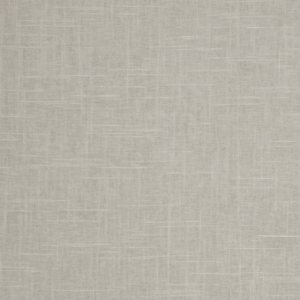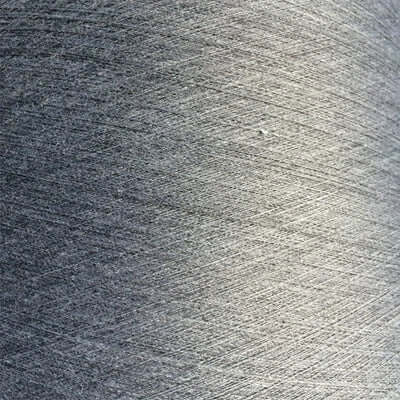Clothing manufacturers long ago discovered that blended fabrics (e.g., Cotton/Polyester, Nylon/Wool) benefit over single natural or synthetic fiber materials. Blended fabrics can not only lessen the cost to produce the product, but they can also improve the feel, appearance, and durability of the fabric while allowing easier care.
At Ivy and Pearl Boutique, questions about fabric blends are one of the most asked queries from our customers. The blend is also an important criteria for us when selecting products for our online boutique. Thus, understanding the advantages and disadvantages of the variety of fabric blends used in our products is important for both customers and sellers.
Advantages and disadvantages of natural and synthetic fibers
Natural and synthetic fibers have distinct advantages and disadvantages when used alone.
- Cotton
- Advantages
- Soft
- Hypoallergenic and dust mite resistant
- Breathes well
- Disadvantages
- Easily wrinkles and creases
- Weakened by light exposure
- Advantages
- Polyester
- Advantages
- Easily dyed
- Light
- Resists shrinkage
- Resists stretching
- Resists mildew
- Not damaged by light
- Resists wrinkling
- Disadvantages
- Does not breathe
- Shine can be unattractive
- Difficult to remove stains from
- Advantages
- Nylon
- Advantages
- Resilient
- Easy to care for
- Resists insects, fungi, and mildew
- Can melt when heat is applied
- Disadvantages
- Not absorbent
- Can have unattractive sheen
- Prone to static electricity
- Advantages
- Wool
- Advantages
- Keeps its shape
- Retains heat
- Breathable
- Resistant to tearing
- Disadvantages
- Pills easily
- Weakens when wet
- Can itch
- Can mildew/mold
- Weakened by light exposure
- Advantages
- Acetate
- Advantages
- Silky appearance and feel
- Disadvantages
- Dyes can fade or bleed
- Heat sensitive
- Relatively weak fiber
- Advantages
- Ramie
- Advantages
- Resists bacteria, mildew, and insects
- Absorbency properties are extremely high
- Easily dyed
- Strengthens when wet
- Luster improves with washing
- Holds shape well
- Resists shrinkage
- Disadvantages
- Low elasticity
- Not resilient
- Low abrasion resistance
- Easily wrinkles
- Stiff and brittle
- Advantages
- Linen
- Advantages
- Keeps you cool
- Easy to clean
- Strong
- Comfortable
- Absorbent
- Resists stains
- Disadvantages
- Expensive
- Wrinkles easily
- Shrinks easily
- Can be affected by mildew and perspiration
- Shines if ironed
- Advantages
- Silk
- Advantages
- Very hypoallergenic
- Soft and shiny
- Highly absorbent - allows your skin to breathe
- Durable
- Light
- Disadvantages
- Expensive
- Yellows with age
- Requires special care
- Leaves waster spots
- Advantages
- Rayon (Viscose)
- Advantages
- Beautiful silky appearance and feel
- Drapes well
- Breathable
- Inexpensive
- Dyes easily
- Disadvantages
- Easily creases
- Usually needs to be dry cleaned
- Prone to stretching and bagging
- Weak, especially when wet
- Absorbs moisture
- Advantages
- Spandex/Lycra
- Advantages
- Lightweight and comfortable
- Resists perspiration
- Is elastic
- Durable and strong
- Disadvantages
- Does not allow skin to breath
- May stick to the body
- Is sensitive to heat
- Advantages
Advantages and disadvantages of fiber blends
When the fabrics above are blended, manufacturers can take advantage of the fabric’s inherent qualities while negating its weaknesses. It's important to note, when a blend is listed on a product, the fabric type with the highest content will be listed first. For instance, a "Cotton/Polyester" fabric will contain at least 51% cotton while a "Polyester/cotton" fabric will contain at least 51% cotton.
Cotton/Polyester
Cotton has a softer feel with high breathability. It is light and cool. However, cotton is more prone to shrinkage and wrinkles. Polyester is strong, durable, and lasts longer than cotton. It also resists shrinkage and wrinkles, the two biggest disadvantages of cotton.
A cotton/polyester blend is common in apparel, especially shirts. The blend is durable, maintains its color well, and is soft and light. A cotton/polyester blend is less susceptible to shrinkage, wrinkles, pilling, and static. The blend is not as breathable as 100% cotton, but its properties make it ideal for a sporty look or apparel that undergoes heavy usage.
Nylon/Wool

Wool is best known for its moisture wicking properties. Wool acts as a natural insulator for both cool and warm environments. It is also anti-microbial which allows it to keep odors at bay. However, some wool may be coarse and scratchy.
Blending nylon and wool emphasizes the benefits of wool without itchiness and results in a fabric that is durable and wrinkle/shrinkage resistant.
Nylon/Acetate

Nylon is a synthetic material. It provides excellent durability, stretch, and wrinkle and shrinkage resistance. It is soft, supple, and dries quickly. Acetate is almost identical to Rayon (at one point, both were considered the same textile). It is breathable and lustrous with a beautiful satiny sheen.
Blending acetate with nylon offers the attractiveness of an acetate fabric with the durability, stretch, and wrinkle/shrinkage resistance seen with nylon.
Ramie/Polyester

Ramie is one of the strongest of all-natural fibers in the world and is highly lustrous and bright, and resists heat, insects, mildew, light, and acids. Ramie however, is prone to wrinkle. Polyester is also strong and durable. It wicks away moisture well but unlike Ramie, resists shrinkage and wrinkles.
Ramie combined with polyester provides all the strength and durability benefits of Ramie with the wrinkle resistance of polyester.
Wool/Cotton

Wool is best known for its moisture wicking properties. Wool acts as a natural insulator for both cool and warm environments. It is also anti-microbial which allows it to keep odors at bay. However, some wool may be coarse and scratchy. Cotton has a softer feel with high breathability. It is light and cool. However, cotton is more prone to shrinkage and wrinkles.
A Wool/Cotton blend improves the ability of the garment to retain its shape resulting in superior appearance, especially after several washes. Wool of course, improves wrinkle resistance while cotton softens the fabric making it more comfortable to wear. It's a common blend in hats, socks, and jackets and vests.
Linen/Cotton

Linen fibers do not stretch which causes them to break down when folded or ironed at the same place each time. A 100% linen fabric is difficult to maintain and expensive. However, linen fabrics are very absorbent, cool to the touch, and have a natural luster. Linen is also very durable and strong, particularly when wet. It is considered a “luxury” fabric. Cotton has a softer feel with high breathability. It is light and cool. However, cotton is more prone to shrinkage and wrinkles.
Blending linen with cotton increases the strength of the fabric while reducing the cost of an expensive linen-only material.
Linen/Silk

Linen fibers do not stretch which causes them to break down when folded or ironed at the same place each time. A 100% linen fabric is difficult to maintain and expensive. However, linen fabrics are very absorbent, cool to the touch, and have a natural luster. Linen is also very durable and strong, particularly when wet. It is considered a “luxury” fabric. Silk is lightweight but durable. Its soft, shiny appearance cannot be beaten. However, it is expensive and yellows with age. It also requires special care when cleaning.
Both linen and silk are luxurious. A linen/silk blend will be expensive but will be durable with an unbeatable beautiful luster.
Linen/Rayon

Linen fibers do not stretch which causes them to break down when folded or ironed at the same place each time. A 100% linen fabric is difficult to maintain and expensive. However, linen fabrics are very absorbent, cool to the touch, and have a natural luster. Linen is also very durable and strong, particularly when wet. It is considered a “luxury” fabric. Rayon is a synthetic fiber that is breathable and drapes well. It has a beautiful luster and silky feel. However, Rayon easily creases, is prone to stretching, and requires dry cleaning.
The classic linen/rayon blend has a beautiful hand and drapes well. It combines the cool comfort of linen with the excellent wearability of rayon.
Silk/Wool

Silk is lightweight but durable. It’s soft, shiny appearance cannot be beat. However, it is expensive and yellows with age. It also requires special care when cleaning. Wool is best known for its moisture wicking properties. Wool acts as a natural insulator for both cool and warm environments. It is also anti-microbial which allows it to keep odors at bay. However, some wool may be coarse and scratchy.
A silk/wool blend retains the shine of silk and the weight of wool. The blend is breathable, drapes well, and possesses a luminous sheen.
Rayon/Cotton

Rayon is a synthetic fiber that is breathable and drapes well. It has a beautiful luster and silky feel. However, Rayon easily creases, is prone to stretching, and requires dry cleaning. Cotton has a softer feel with high breathability. It is light and cool. However, cotton is more prone to shrinkage and wrinkles.
A rayon/cotton blend is common. Rayon lends a silky feel and appearance to the blend but like cotton, it’s prone to creases. Still, rayon wrinkles less than cotton which adds benefit to the fabric blend.
Cotton/Polyester/Rayon/Spandex
Another common but complex blend uses cotton, polyester, rayon, and spandex (i.e. Lycra). It's common in quality apparel that requires stretch (e.g. stretch pants). The fabric will have comfort and breathability of cotton. Spandex helps control the shape of the fabric since it resists wrinkles while polyester contributes strength. The stretchability of the blend derives from the Rayon component.

